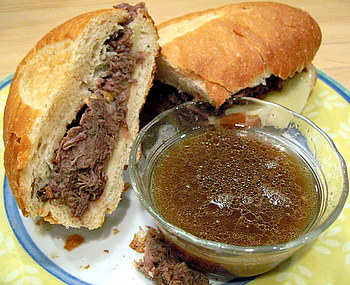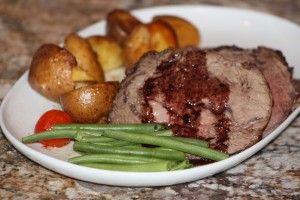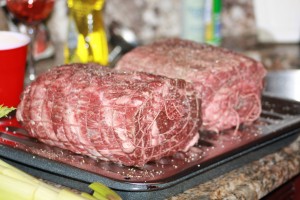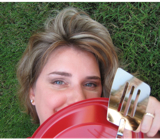Super-creative, super-at-everything sister-in-law Chef Sandy is back with her idea for spoiling the dads in your life this Father’s Day.
Hint: it involves meat. And smoking it.
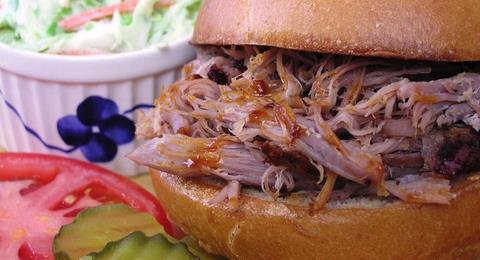
Some like it hot. Not me. It is hot in Houston at the moment, and I do not want to cook. The thought of heating up my sun-baked 1950s ranch-style home any more than necessary by turning on the oven, is just unthinkable. I read a recipe in today’s paper for a pork sandwich that looked truly delicious and delightful. A sandwich is not hot, right? Wrong…. This recipe called for the pork butt to be baked for 4 hours at 250°. With my west-facing kitchen and the worst oven in the world, that would mean the whole kitchen would be about 110° by the time dinner was ready. By that time, I am way too hot and irritable to even think about pulling pork and making gorgeous sandwiches. There has got to be a better way.
Cooking with a smoker is an old-fashioned, time-honored way of slow cooking meats, which also happens to cook them outside of the kitchen. Grilling is also an outside method of cooking, but one which generally requires more attention (read: me standing over whatever is cooking, making sure it doesn’t burn) and necessarily means standing outside, hopefully in the shade, over a live heat source. Also not that appealing when it is 97° in the shade.
But smoker cooking, especially in today’s modern smokers, is pretty hands off. I have an electric smoker that I plug into an outlet in my garage. The smoker sits on my driveway, about 12 feet from my kitchen back door. In the evening before I want to cook, I dry rub seasonings on my chosen meat product (a large pork butt, in this case) and wrap it well and let it sit in the fridge overnight. Early in the morning when it is still cool-ish, I take the meat out of the fridge while I get the smoker ready, which involves putting 2 oounces of wood in the “fire box,” and covering the bottom of the smoker with foil. Then I drag out my heavy duty extension cord, plug the smoker in and go inside and get the meat. The meat is placed on the grate. I close the smoker, turn it on, and let the thing smoke for 8-10 hours until it is done. Maybe I have to take it out and cover it with foil, which I do in the case of a pulled pork or beef brisket, but that is as hands-on as it gets. The electric smoker I have does a great job of maintaining an even temperature, and also keeps the meat pretty moist.
My smoker also happens to be large enough (I have about 6 shelves for different products, and each shelf is big enough to hold a 9×13 pan) that I can, if organized, cook other side dishes at the same time as my main entrée. So, for example, I can slide in a pan of beans to bake at the same time I cover the pork with foil, and when the pork is done cooking, I will also have beans.
In the evening, after having an icy cold beverage for fortification, I can remove the meat and finish the preparations for dinner in my cool kitchen. Add some coleslaw and buns, and that is dinner for at least 8 hungry people. Add some icy cold watermelon or ice cream for dessert, and you will have a happy crowd.
So what are you making the fathers in your life for Father’s Day this weekend?
Enjoy!
Photo courtesy of www.Gourmet-Ovens.com.
